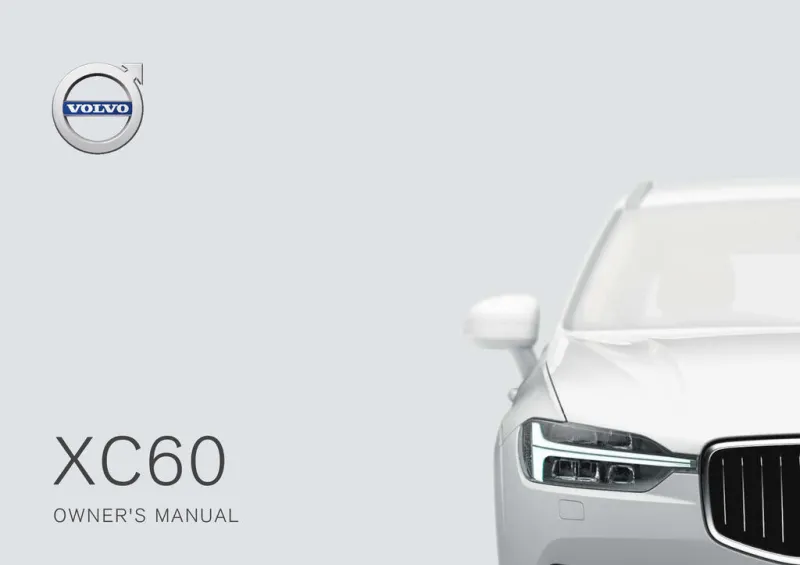2019 Volvo Xc60 Owner's Manual

Table of Contents
2019 Volvo Xc60 Overview
Introduction
The 2019 Volvo XC60 exemplifies the Swedish automaker's commitment to safety, luxury, and performance in a compact SUV package. With its elegant design, advanced technology, and versatile interior, the XC60 offers an exhilarating driving experience paired with a comfortable atmosphere for both driver and passengers. This model stands out in the competitive luxury SUV segment, combining sophistication with practical functionality.
Powertrains
The 2019 XC60 is offered with a variety of powerful and efficient powertrains, catering to diverse preferences. The base model features a 2.0-liter turbocharged four-cylinder engine producing 250 horsepower, while an upgraded version introduces a supercharger to achieve 316 horsepower. For those seeking a more eco-friendly option, the XC60 T8 eAWD Plug-In Hybrid combines a gasoline engine with an electric motor, delivering a remarkable 400 horsepower and impressive fuel efficiency. All powertrains provide smooth acceleration and responsive handling, ensuring a dynamic ride on any terrain.
Trims
The XC60 is available in three well-equipped trims: Momentum, R-Design, and Inscription. Each trim showcases a unique blend of luxury features and performance enhancements. The Momentum trim serves as a strong foundation with premium materials and advanced safety technologies. R-Design caters to a sportier audience with distinctive styling and upgraded interior elements, while the Inscription trim elevates luxury with rich wood inlays, leather upholstery, and a host of comfort upgrades.
Features
Featuring an array of cutting-edge technologies, the 2019 XC60 is equipped with a 9-inch touchscreen infotainment system, voice control, navigation, and a premium audio system. Safety is a top priority, with advanced features such as Pilot Assist, lane-keeping aid, and numerous driver assistance systems designed to keep occupants secure. With spacious seating and adaptable cargo capacity, the XC60 provides an ideal setting for both daily commutes and weekend adventures.
Owner's Manual
The owner's manual for the 2019 Volvo XC60 serves as an essential guide for new owners, detailing operational instructions, maintenance schedules, safety protocols, and troubleshooting tips to ensure optimal vehicle performance. It also highlights the array of available features, enhancing the overall driving experience while providing helpful insights into the unique characteristics of this luxury SUV.
User manual download
The Volvo Xc60 owner manual for the 2019 model year is to be found in PDF downloadable format on this page. The owner manual for the model year 2019 is free and in English, but the repair manuals are usually not easy to get and may cost more.
Manual Questions
Fill the form below and someone will help you!

